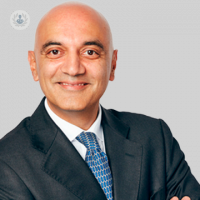At what age can a woman develop endometriosis?
Escrito por:Endometriosis is a condition whereby the tissue that normally lines the inside of the womb (the endometrium) is found in other parts of the body. Most typically these areas are around the ovaries and other areas of the pelvis including the bowels and bladder. Just as the womb lining tissue – the endometrium – normally bleeds on a monthly basis (“a period”), these other areas of endometrium may similarly bleed. Unfortunately, this blood has nowhere to escape to, unlike the monthly period which is lost through the vagina, and it may cause irritation in the surrounding areas of the pelvis. This irritation or inflammation sets off chain reactions within the body that may manifest as pain. Over time, this inflammation may cause areas to become stuck together almost like a glue, and also may interfere with how structures or organs like the bowel, bladder, fallopian tubes, ovaries or vagina behave.
What is the average age that a woman can develop endometriosis?
Endometriosis is pretty much only present in women of reproductive age – it is affected by hormonal production, oestrogen, which is most prevalent during the normal female reproductive lifespan. Levels of this hormone significantly diminish after the menopause.
Where does endometriosis occur in the body and what are the symptoms?
The typical symptoms are often related to the site of the endometriosis:
• it may be within the body/ muscle of the uterus (“adenomyosis”).
• It may be within the ovary giving rise to cysts (“chocolate cysts”), which may interfere with the function of the ovaries.
• It may be in the area between the bowel and vagina or womb (the “pouch of Douglas”) or the supporting ligaments to the womb, which can cause pain on having sex.
• It may be within, or on the surface of the bowel, which can cause pain on bowel opening, particularly at the time of a period.
• It may be within or on the bladder causing pain on passing urine.
Some women will experience some or all of these problems. It is important to remember that some women will have the presence of endometriosis in their pelvis, but have remarkably little in the way of symptoms. Conversely, some women will have many typical symptoms of endometriosis, but very little may be visible to the naked eye.
In addition, there may be more general non-specific symptoms such as changes in bowel habit or bladder problems that are often also reported by women with endometriosis. It may be that there is an overlap of the condition with other medical conditions such as “irritable bowel syndrome” or “painful bladder syndrome”. This may mean that even by treating the endometriosis, bowel or bladder symptoms may continue. Indeed the functioning of these organs is incompletely understood by doctors. Similarly, despite treatment, some women will continue to have symptoms, and may, unfortunately, persist in having chronic pain. For these women, it is likely that a complex set of chain reactions have occurred within the body that may mean the nerve fibres continue to be stimulated despite the fact that the original provoking insult (for example the endometriosis lesion) is no longer present or active.
What are the treatment options for endometriosis?
The treatments for endometriosis are diverse and multiple. There are lifestyle and behavioural changes that are very important. There are medical treatments that are often geared towards hormonal methods and/or an array of different pain medications that target inflammation or nerve activity. As the condition is driven by hormones and the pain is a result of inflammation-triggering nerve fibres, it makes sense that the pharmacological treatments are directed in these areas. In addition, there are surgical treatments that similarly vary in their level of complexity, complications and effects.
For all the above treatments it is first important to establish what the patient’s treatment aims are, what their other medical conditions are, what previous treatments have been tried and what the plans for future pregnancies are. These factors all aid the decision-making. Most women start treatment by trying the simpler interventions primarily and working through the options.



